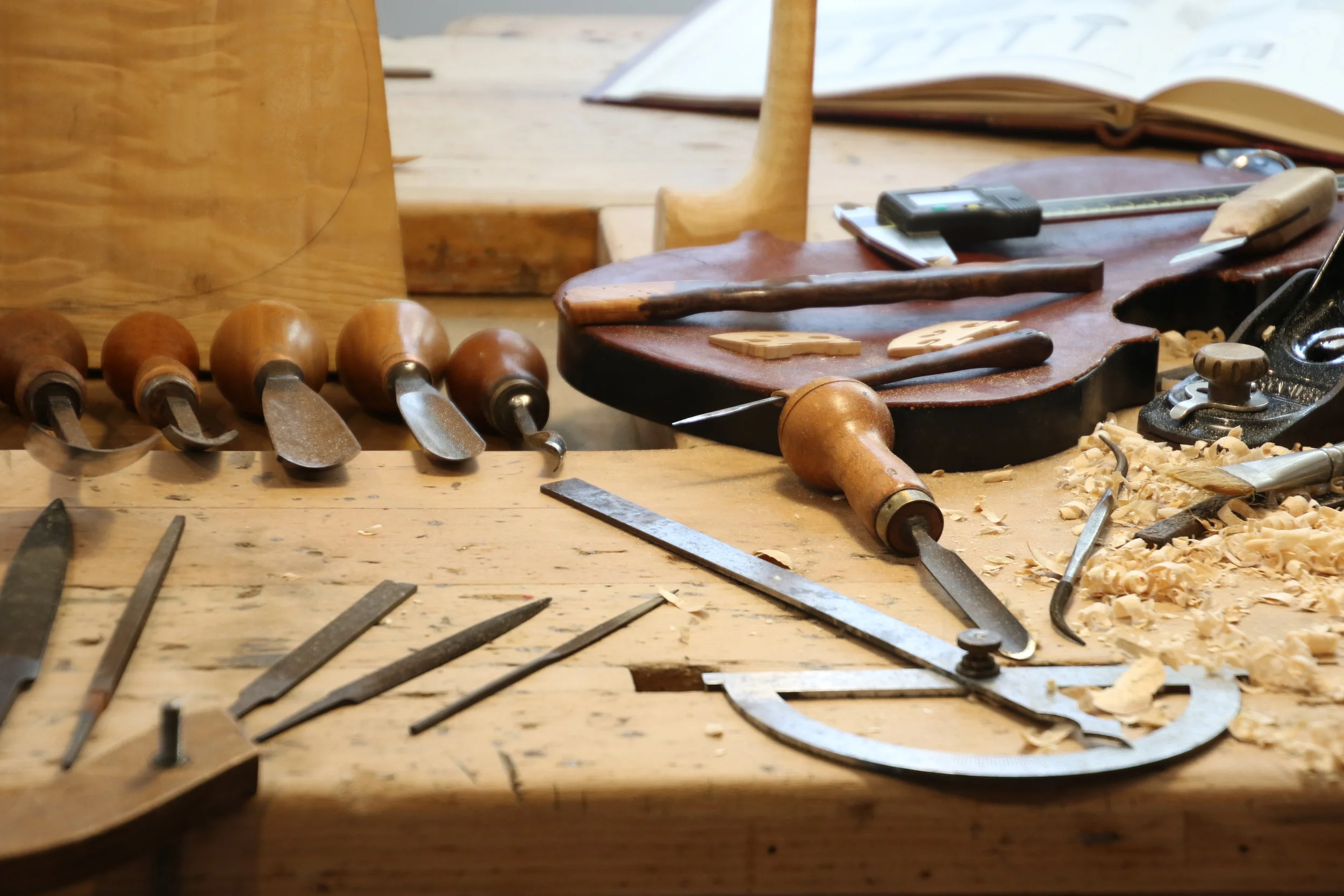A Beginner's Guide to Basic Woodworking
One of the many shocks a person experiences when graduating from college is how expensive the basic necessities of life are. As you search for solutions for your barren apartment, the price of basic furniture can threaten to send you in to cardiac arrest. Instead of shelling out your limited supply of hard earned cash, building at least some of your furniture yourself is a very reasonable alternative. Basic wood working skills can get your mattress off the floor, give you a shelf to display your knick-knacks, and create a place to sit while you eat your ramen noodles (or your mac & cheese for fancy date nights).
To begin your journey in to the wonderful world of woodworking, you’ll need to collect some basic woodworking tools:
A claw hammer (the kind with a handle about 12 inches long and a claw on one side for pulling nails).
Small measuring tape (at least 10 feet)
Carpenter's square
A crosscut hand saw with a miter box
The hammer, measuring tape, and square might all be picked up at a pawn shop or thrift store, probably for as little as $20. The miter box and saw should probably be brand new from a hardware store, which will run about another $25.
The hammer will be used for pounding in nails and hitting your fingers, while the measuring tape will be used for measuring your lumber. You’ll use the carpenters square to mark your boards for cutting a 90 degree angle, and the miter box and saw will do the actual cutting at precise 90 and 45 degree angles.
Next, you'll need to decide what it is you want to build. Do-it-yourself furniture plans abound on the interwebs, but as a new wood worker, you'll want to start very simple. Avoid things with drawers or things that require cutting lots of thick lumber. While your first few pieces will probably look more like a picnic table than an elegant dinner table from the Palace at Versailles, becoming a decent woodworker takes less practice than you think. You might even consider looking for some sort of wood working club in your area that will give you access to the experience and fancy tools to make your dreams of building a carved Viking warlord feasting table come true.
One of the goals of woodworking is to make something as light as possible, yet very strong. It’s also desirable to hide how the furniture is put together as much as possible. Experienced woodworkers build things that appear as if they are held together by magic because the joints (the places where two pieces of wood come together) are cleverly hidden.
Once you decide what to build, draw a plan of what you'll need to complete the piece. In order to do this, you’ll need to understand some things about lumber dimensions. Standard lumber comes in dimensions that are described as 1, 2, or 3 inches thick and 1, 2, 3, 4, 6, 8, 10 or 12 inches wide. However, it’s important to understand that, for example, a 2x4 board isn't actually 2 inches by 4 inches. The true dimensions will be less, usually 1 3/4 x 3 3/4 for a 2x4. This is confusing, but important to be aware of.
Now that you know what you need, head to the hardware store to find your wood and fasteners. For the beginning wood worker, stick with soft woods. These are less durable, but also easier to cut and much, much cheaper. A softwood comes from trees that look like Christmas trees and include pine trees and douglas firs. Hardware stores usually carry different grades of lumber. The building grade wood will be much cheaper, but you'll have to sort through it to check for warped (crooked) boards and other deformities. Sometimes they can even cut your lumber for you right at the store, but make absolutely sure you know what cuts you need before you allow them to make cuts for you. Pick up a few different sizes of finishing nails. These are nails that are slim with a very small head. 1 and 2 inch size will do most of what you need starting out. Also grab some sand paper and a sanding block.
Once you start the actual building process, "measure twice, cut once" applies. If you have to cut multiple pieces of the same size, it can be helpful to use the first piece as a template for all the others to ensure they come out the exact same size. Be sparing with your nails; nothing looks worse than overusing them. Your first project probably won't come out looking perfect, but the more careful you are and the more you plan ahead, the better your pieces will become. In no time, you'll be flipping the bird to IKEA as you build your apartment by hand, and give it a touch of authenticity besides.






